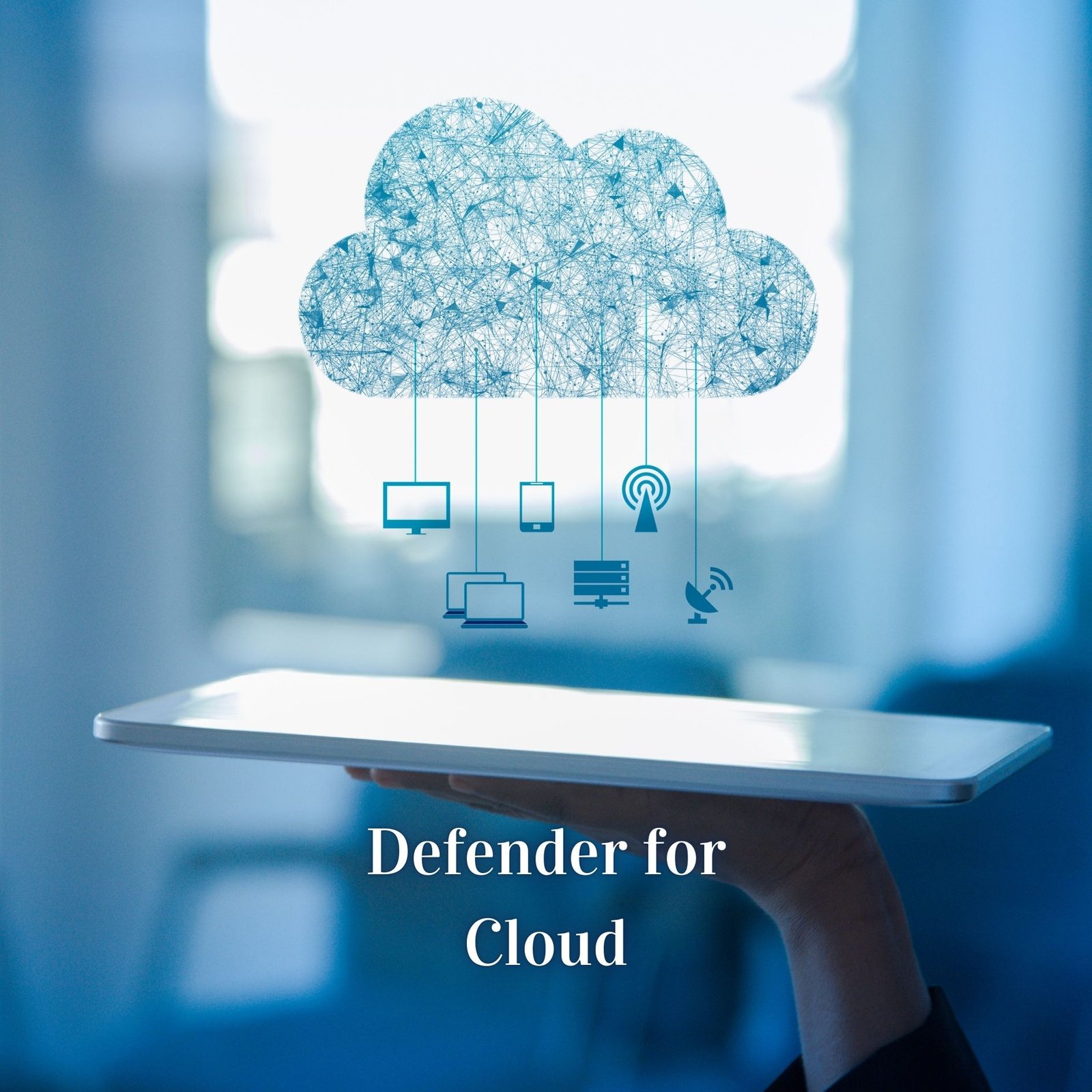Table of Contents
Introduction
In an era where data breaches and cyberattacks dominate headlines, securing your cloud infrastructure is more critical than ever. Businesses transitioning to cloud environments need comprehensive solutions to safeguard sensitive information, prevent unauthorized access, and maintain compliance. Microsoft Defender for Cloud steps in as a powerful guardian, delivering unmatched security across multi-cloud and hybrid environments. This article explores how Defender for Cloud offers peace of mind by fortifying your cloud assets.
What is Microsoft Defender for Cloud?
Microsoft Defender for Cloud is an advanced security management tool designed to protect cloud and on-premises workloads. It combines security posture management and threat protection, providing end-to-end visibility and control over your resources. Its primary goal is to detect vulnerabilities, enhance compliance, and counter sophisticated attacks.
Core Benefits of Using Defender for Cloud
1. Enhanced Security Posture Management:
Defender for Cloud continuously evaluates your resources, offering actionable recommendations to strengthen your security.
2. Real-Time Threat Detection:
It detects and responds to threats using machine learning, reducing incident response times.
3. Seamless Azure Integration:
As a native Azure service, it works perfectly with other Microsoft security tools, providing a unified security experience.
Features of Defender for Cloud
1. Cloud Security Posture Management (CSPM)
2. Cloud Workload Protection (CWP)
3. Multi-Cloud and Hybrid Support
These features deliver comprehensive protection whether you’re using Azure, AWS, or Google Cloud.
Enhanced Security Posture Management
Defender for Cloud analyzes configurations and suggests improvements to secure your infrastructure. It helps meet regulatory requirements by mapping your setup against frameworks like NIST and PCI DSS, providing visual dashboards to track compliance status.
Advanced Threat Detection and Response
One of the most impressive capabilities of Microsoft Cloud Defender is its proactive threat detection. It continuously monitors for unusual or suspicious activities across your cloud environments. Leveraging AI-driven insights, it identifies anomalies and potential threats before they escalate into major security incidents.
Defender for Cloud provides actionable alerts with detailed guidance, helping teams respond swiftly and effectively. Automated remediation options can mitigate threats without human intervention, reducing the risk of damage. The system integrates with Microsoft Sentinel for advanced analytics and broader incident response capabilities.
Cloud Workload Protection (CWP)
Protecting cloud workloads is crucial in today’s dynamic IT landscape. Defender for Cloud’s workload protection feature secures a wide range of resources, including:
1. Virtual Machines (VMs): Monitors vulnerabilities and provides real-time threat prevention.
2. Containers: Secures containerized applications by analyzing images and runtime behaviors.
3. Databases: Detects unusual queries or access patterns to prevent data breaches.
4. Serverless Computing: Guards functions and logic apps against injection attacks and privilege escalations.
By covering all these components, Defender for Cloud ensures holistic protection across your infrastructure.
Defender for Cloud in Multi-Cloud Environments
While it is designed natively for Azure, Microsoft Defender for Cloud supports other cloud providers like AWS and Google Cloud. This flexibility allows businesses to manage security from a single pane of glass. Organizations using multi-cloud architectures benefit from centralized security policies, unified compliance reporting, and streamlined threat detection.
The ability to apply consistent security across platforms improves visibility and simplifies governance, making Defender for Cloud a strategic tool for companies with diverse cloud deployments.
Integrations and Extensibility
Defender for Cloud offers extensive integrations with both Microsoft and third-party tools. It enhances security workflows by working seamlessly with:
1. Azure Security Center for deeper insights into Azure resources.
2. Microsoft Sentinel for comprehensive security information and event management (SIEM).
3. Third-party tools like Splunk or ServiceNow for custom workflows and reporting.
These integrations improve the overall security ecosystem, allowing organizations to build tailored security architectures suited to their unique needs.
Compliance Management and Reporting
Meeting regulatory standards is a key challenge for cloud users. Cloud Defender simplifies compliance by:
1. Mapping your environment to frameworks like ISO 27001, PCI DSS, and GDPR.
2. Offering continuous assessments and automated compliance checks.
3. Generating detailed compliance reports for audits and internal reviews.
This proactive approach helps organizations stay ahead of compliance requirements, reducing the risk of penalties and reputation damage.
Cost Optimization with Defender for Cloud
While robust security is invaluable, cost management remains a concern. Defender for Cloud provides flexible pricing based on the resources you protect:
1. Free Tier: Basic security recommendations and assessments.
2. Enhanced Protection Plans: Advanced threat protection with tailored pricing for VMs, databases, and storage accounts.
By optimizing resource allocation and choosing the right plans, businesses can maximize security without exceeding budgets.
Best Practices for Maximizing Security with Cloud Defender
To get the most out of Microsoft Defender for Cloud, following best practices is essential. Here are key strategies to enhance your security posture:
1. Enable Continuous Monitoring:
Regularly review and act on security recommendations provided by the Cloud Security Posture Management (CSPM) feature. Implementing suggested improvements ensures a secure and compliant environment.
2. Implement Role-Based Access Control (RBAC):
Assign specific roles to limit access based on users’ needs. This minimizes the risk of insider threats or accidental misconfigurations.
3. Automate Threat Response:
Use built-in automation capabilities to create policies that automatically respond to incidents, reducing manual intervention and response times.
4. Regularly Audit and Update Policies:
Security needs evolve. Continuously assess policies and configurations to adapt to new threats and compliance requirements.
By adopting these practices, organizations can achieve a resilient and adaptive security framework.
Common Use Cases
Microsoft Defender for Cloud shines in various scenarios:
1. Securing Software-as-a-Service (SaaS) Applications:
Organizations using cloud-based SaaS platforms can safeguard user data and ensure the integrity of third-party integrations.
2. Protecting DevOps Environments:
With advanced container security and integration into CI/CD pipelines, Defender for Cloud fortifies development environments.
3. Hybrid Cloud Management:
Companies operating in both on-premises and cloud environments can centralize their security strategy, ensuring seamless protection across diverse infrastructures.
Comparing Defender for Cloud with Competitors
When stacked against competitors like AWS Security Hub and Google Cloud Security Command Center, Microsoft Defender for Cloud offers unique advantages:
1. Seamless Azure Integration:
Native compatibility with Azure services provides an unmatched user experience for Microsoft-centric environments.
2. Multi-Cloud Support:
Unlike some competitors focused solely on their own ecosystems, Defender for Cloud embraces multi-cloud architectures.
3. Comprehensive Compliance Tools:
Automated compliance tracking with detailed dashboards simplifies governance and audit preparations.
Conclusion
Microsoft Defender for Cloud stands as a cornerstone for comprehensive cloud security. By offering a full suite of security management, threat detection, and compliance tools, it provides peace of mind for organizations navigating the complex landscape of modern cloud computing. Whether managing single or multi-cloud environments, its versatility and robustness make it an indispensable ally.









